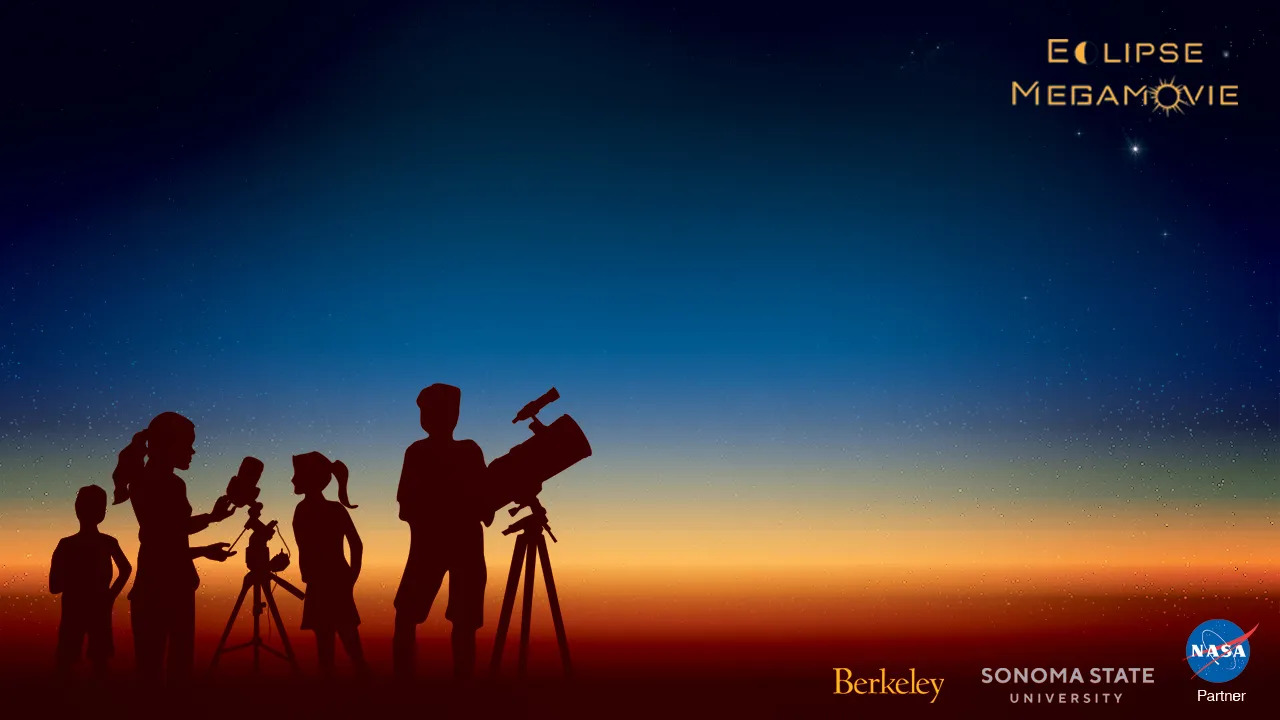NASA enlists citizen scientists to help solve solar mysteries during the total solar eclipse 2024
Citizen scientists are helping NASA solve solar mysteries.

Everyone who sees a total solar eclipse from within the path of totality gets fixated on the sun's majestic corona. It's the only time it can be seen with the naked eye and photographed.
But another layer, the chromosphere, is also revealed during totality. Between the sun's surface — the photosphere — and the corona, the chromosphere is a layer of superheated gas (plasma), through which jets and plumes of plasma flow on their way to space.
Related: Total solar eclipse 2024: Everything you need to know
But there's a problem. "Solar physicists don't know how much of the sun's mass is leaving the sun," said Laura Peticolas of Sonoma State University in California, leading the NASA-funded Eclipse Megamovie 2024 project, to Space.com. "Total solar eclipses provide information to the solar community that can't be provided in any other way."
Eclipse Megamovie 2024 is focused on creating an open-source dataset to help solar physicists solve a fundamental problem in plasma dynamics during totality on April 8. Plasma moves from the sun's photosphere into space, but it's impossible to see how far using NASA's space-based Solar Dynamics Observatory. It uses an occulter to block the sun's bright disk but to ensure that none of the sun's light damages the optics, it has to block the chromosphere and lower the corona. But that's where the action happens. "There's this region that we can't see very well with NASA satellites in visible light," said Peticolas. "We have the opportunity to calculate the density of the plasma as it moves out by capturing the scattered visible white light."
That's only possible to capture during a total solar eclipse. Around 100 trained citizen scientists — all of whom have their own DSLR camera and have been given an equatorial mount (to compensate for Earth's rotation) — will produce about 1,200 images of the corona and chromosphere. In addition to producing fresh data for scientists, the results will be compared to the same project from 2017 during the last total solar eclipse in the U.S.
It was supported by Google and relied on 2,000 smartphone owners downloading an app to take and upload over 34,000 images of the eclipsed sun. This effort to produce a video pieced together from images collected by citizen scientists along the path was an outreach success, but scientifically not as valuable as hoped. "We didn't require people to have equatorial mounts, so the sun moved in the field of view on their images," said Peticolas. "We gave them four different exposure times to use as an example and thought that people would change that up, but mostly they didn't." Peticolas had hoped that there would be at least 90 different exposure times in the thousands of images, which is what experienced eclipse photographers obtain during totality. "That didn't happen, so we didn't have the density of data we needed to make really good images," said Peticolas. Despite that, scientists eventually found evidence of a plasma plume in our data, but things needed to change for 2024.
Get the Space.com Newsletter
Breaking space news, the latest updates on rocket launches, skywatching events and more!
Now, with better equipment — and with 100 people taking and uploading much higher quality images in 50 different exposures — it's hoped the Eclipse Megamovie 2024 will achieve something more detailed — and more dramatic.
This time, there will be more photos and a more extensive variety of exposure times. In addition, the sun is approaching — or possibly already at — solar maximum, which means more visually impressive processed images than in 2017. Solar maximum — the height of the sun's magnetic activity during the 11-year solar cycle — is crucial because citizen scientists will likely capture more activity in the corona and chromosphere than in 2017. "In 2017, we just didn't have the diversity of exposure times to get a high dynamic range image of the solar corona," said Peticolas, who hopes to get all kinds of images from an additional 2,000 volunteers using DSLR cameras as well as from the 100 trained photographers. "This time we will."
Join our Space Forums to keep talking space on the latest missions, night sky and more! And if you have a news tip, correction or comment, let us know at: community@space.com.

Jamie is an experienced science, technology and travel journalist and stargazer who writes about exploring the night sky, solar and lunar eclipses, moon-gazing, astro-travel, astronomy and space exploration. He is the editor of WhenIsTheNextEclipse.com and author of A Stargazing Program For Beginners, and is a senior contributor at Forbes. His special skill is turning tech-babble into plain English.









